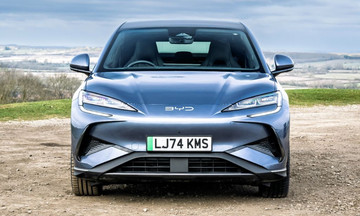Many EV batteries retain over 50% of their original energy storage capacity even after being removed from vehicles. Instead of premature disposal or recycling, these batteries are increasingly repurposed into energy storage systems (ESS). This emerging practice transforms how utilities, industries, and households manage electricity demands and grid reliability, especially in an era of increasing reliance on digital infrastructure.
At the forefront of this transformation is Redwood Materials, a Nevada-based company founded by JB Straubel, Tesla's former chief technology officer.
Redwood currently processes about 20 GWh annually—equivalent to over 250,000 EVs—and is responsible for 90% of lithium-ion battery recycling across North America. The process involves rigorous diagnostics to determine whether a battery should be fully recycled to recover raw materials or repurposed for a second life as an ESS.
 |
Part of the EV battery processing. Photo: Redwood Materials |
Part of the EV battery processing. Photo: Redwood Materials
ESS built from these repurposed batteries offer a unique solution to two challenges: the need to stabilize overloaded power grids and the need to reduce reliance on fossil fuels. In areas affected by intermittent renewable energy generation or limited EV charging infrastructure—such as rural or remote locations—these batteries can be integrated with solar and wind power systems, acting as reliable local energy reserves.
The rise of energy-intensive technologies, from AI servers to autonomous vehicles, further increases the demand for clean and stable electricity. Repurposed battery storage can serve as a crucial buffer, enabling the distribution of stored energy during peak usage or power outages. Such systems are not only cost-effective but also environmentally responsible, reducing landfill waste and toxic runoff from spent EV batteries.
While repurposing is gaining traction, recycling remains the dominant industrial process. According to forecasts from IDTechX, a UK-based research firm, the global EV battery recycling market is projected to reach 52 billion USD by 2045. Meanwhile, the market for repurposed batteries is expected to reach 5.2 billion USD by 2035.
The discrepancy lies in the complexity of the handling process. Repurposing, especially at the cell level, necessitates intricate diagnostics, disassembly, and reconfiguration, all of which add to the cost.
However, both recycling and repurposing play vital roles in establishing a closed-loop battery economy. As global EV sales rise—1.3 million units were sold in the US alone in 2024—the volume of spent batteries entering this ecosystem will grow exponentially. The efficiency of transitioning these batteries to their next phase is crucial in determining the overall environmental impact of the EV movement.
In this evolving energy landscape, a battery's second life may be its most valuable.
My Anh (InsideEVs)











